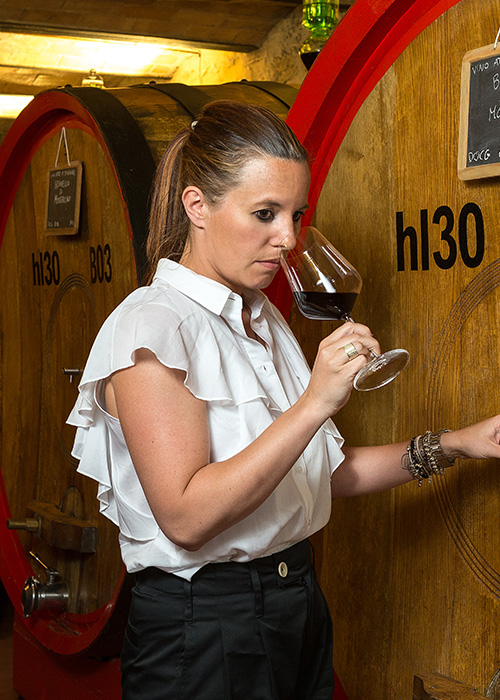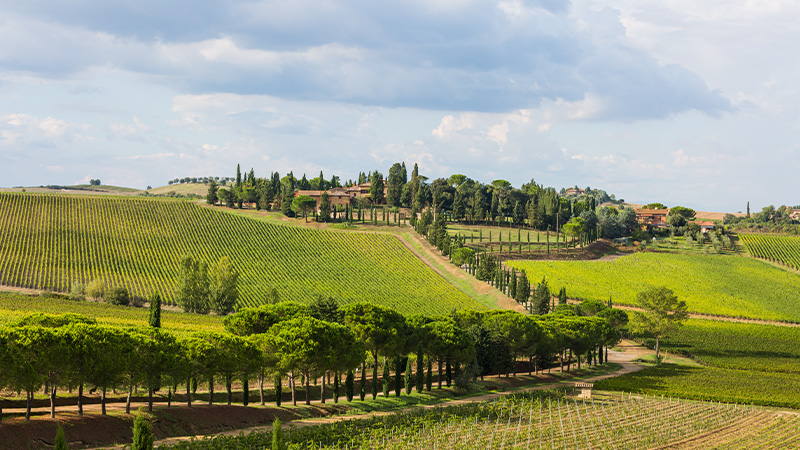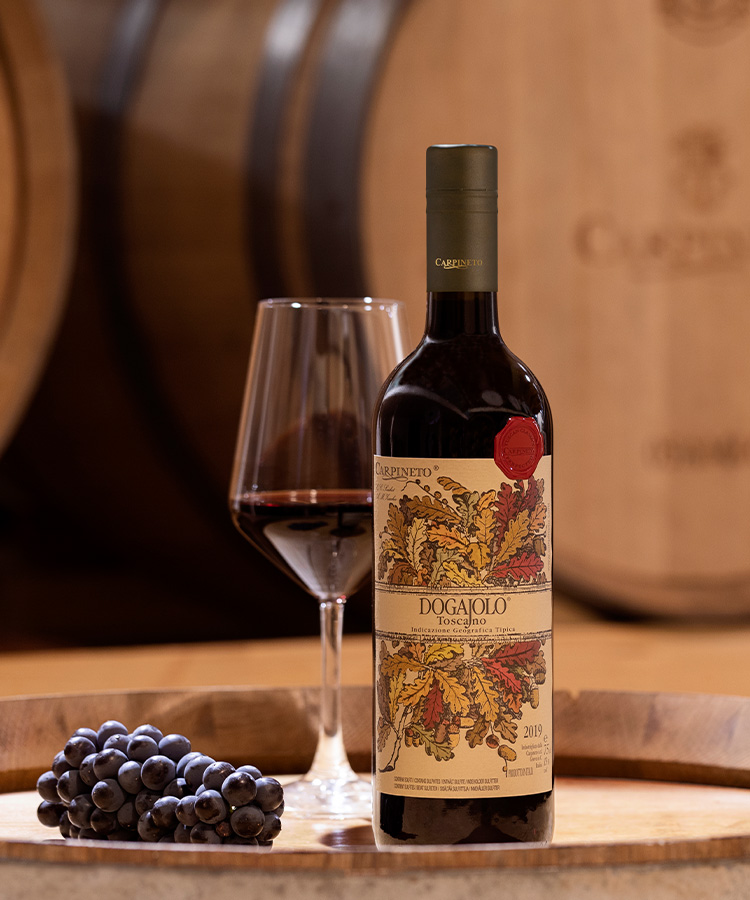
When Giovanni Carlo Sacchet and Antonio Mario Zaccheo Sr. founded the Carpineto winery in 1967, they wanted to create a Chianti Classico that would elevate the Tuscan wine’s reputation as a lowly table wine served in a cheap straw fiasco. The ambitious duo succeeded by using cutting-edge technology to produce an award-winning, internationally recognized wine and, in the process, revitalized Tuscany’s reputation as a world-class wine region.
Fast forward to 1993 when Carpineto set the wine world on its head again with Dogajolo Toscano Rosso I.G.T. The young Super Tuscan, or “Baby Tuscan,” brought forth completely new characteristics to the wine world. Traditionally, Super Tuscans were considered special-occasion wines. Carpineto, however, combined the deep colors of a young wine with the wood-aged elegance associated with more mature wines, along with a distinctive fruit and fragrance bouquet to create something new. Dogajolo’s Baby Tuscan instantly became a runaway success. Along the way, the Dogajolo (pronounced “Dog-ay-yolo) line of wines grew from the flagship Rosso to a collection of high-quality white, red, and rosé blends with an expressive fruit character and a distinctive Tuscan flair.
Dogajolo’s success helped cement Carpineto’s status as a leading force in the wine industry. In today’s world, however, it is not enough just to create outstanding wine. First-rate wineries must also employ bold, climate-conscious solutions to build a brighter future. Headlines about disastrous wildfires in California and Australia, droughts in Europe, and grape variants on the verge of extinction constantly remind us how climate change is affecting the wine world.
Caterina Sacchet is now the second-generation winemaker for Carpineto and understands the importance wineries have in acting as a steward to the land. She grew up in her family home above the main wine cellar, surrounded by vineyards and olive trees, and would like to see those vineyards preserved for generations to come. Following in the footsteps of her father and mentor, Giancarlo Sacchet, she is an advocate of modern, sustainable agricultural methods.
“We believe in sustainable farming and being good keepers of the land; therefore our operation is actually carbon-neutral and our wines are vegan-friendly,” said Sacchet.

In the soft rolling hills around Tuscany, the Sacchet and Zaccheo families still work together to manage vineyards on five estates. These vineyards are at the front lines of the climate crisis as wine producers are increasingly aware of how vulnerable their vineyards’ terroir is to climate change. Grape growers seek to reduce their environmental impact through sustainable farming.
What does sustainable farming look like in the Dogajolo vineyard? For starters, the Chardonnay, Grechetto, and Sauvignon Blanc grapes used to produce Dogajolo Toscano Bianco were planted in estate vineyards after a careful study aimed at identifying the best environmental practices for the production of the wine. Grape growers use dry-farming techniques on the hillside vineyard to greatly reduce the need for irrigated water. In addition to being environmentally responsible, environmental advocates suggest dry farming also produces more intensely flavored grapes. While this might be up for debate, Dogajolo Toscano Bianco, with pleasant citrus flavors and a clean, delicate finish, is a crowd-pleaser.
In all Dogajolo vineyards, farmers plant native legumes and grasses as a cover crop in between the vine rows to increase carbon and nitrogen below the ground and prevent soil erosion above ground. These plants also foster a healthy biodiversity of insects.
Instead of using insecticides to kill the Eudémis moths notorious for destroying European grapevines each spring, vineyard managers place capsules on the vine that emit large quantities of pheromones to disorient the males. The disoriented males cannot find the females to mate with, which means they cannot produce the larvae that perforate leaves and grapes.
Sustainable vineyard practices are not the only piece of the puzzle when determining a wine’s carbon footprint. The packaging of that wine is a less glamorous, but key component to C02 emissions. Packaging accounts for nearly 30 percent of a wine’s carbon footprint. Therefore, using lighter wine bottles to reduce CO2 emissions in both production and transportation is key. In recent years, Carpineto reduced the weight of its Dogajolo wine bottles by 15 percent to aid in balancing CO2 emissions.
Carbon neutrality has long been an environmental goal of wineries intent on combating climate change. The idea is that wineries can offset their environmental impact by switching to renewable energy sources, using lighter packaging, and eliminating chemical sprays. Dogajolo is not only made in a carbon-neutral winery, it is in fact carbon positive. The winery has a state-of-the-art solar panel system to take advantage of renewable solar energy. In addition to that, the woods, vineyards, olive groves, and fauna across all estates absorb 26 percent more carbon than Carpineto generates.

The last piece of Carpineto and Dogajolo’s eco-friendly puzzle is its commitment to biodiversity. In addition to vineyards full of young vines used to grow the Sangiovese grapes for Dogajolo Rosso, the Montepulciano estate acts as a proper ecosystem for natural life to thrive. A wildlife refuge surrounding a natural spring-fed lake can be found at the Vino Nobile estate. Pheasants, ducks, hare, wild boar, and deer, along with migratory birds, all seek shelter at the refuge.
“Eco-sustainability means leaving both a company and the planet we live on even better than how we found them for the next generation to come,” said co-owner Antonio Michael Zaccheo Jr.
“Sustainability” might be the latest buzz word in the wine industry, but for the creators of Dogajolo wine, it is an ethos that has been baked into the winery since day one. From its humble beginning creating a Chianti to make Tuscany proud, to producing an innovative line of Baby Tuscans, its winemakers have implemented eco-conscious measures every step along the way to ensure wine lovers could enjoy their wine for generations to come.
This article is sponsored by Dogajolo.
